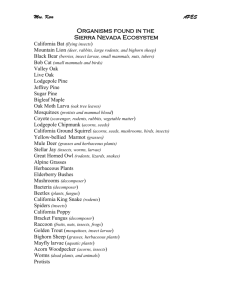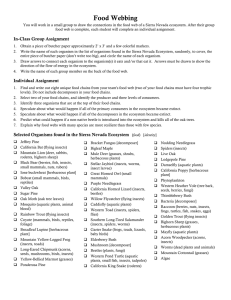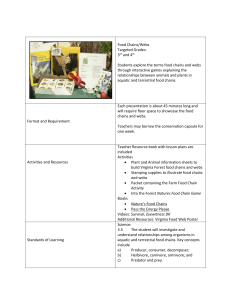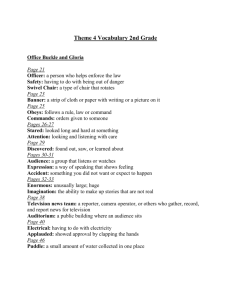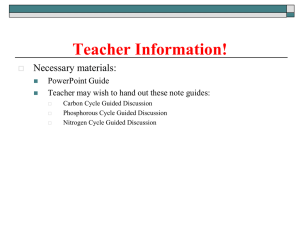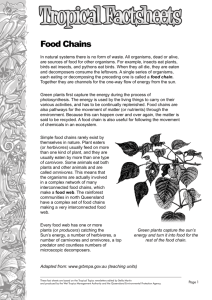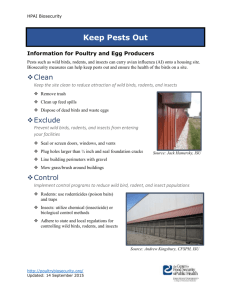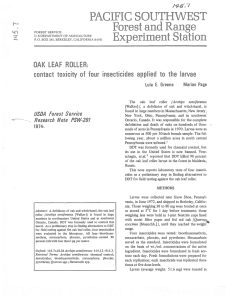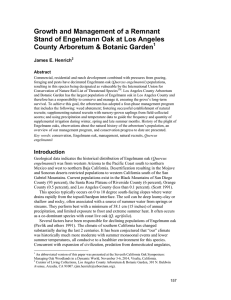Sierra Nevada Food Web Activity Worksheet
advertisement
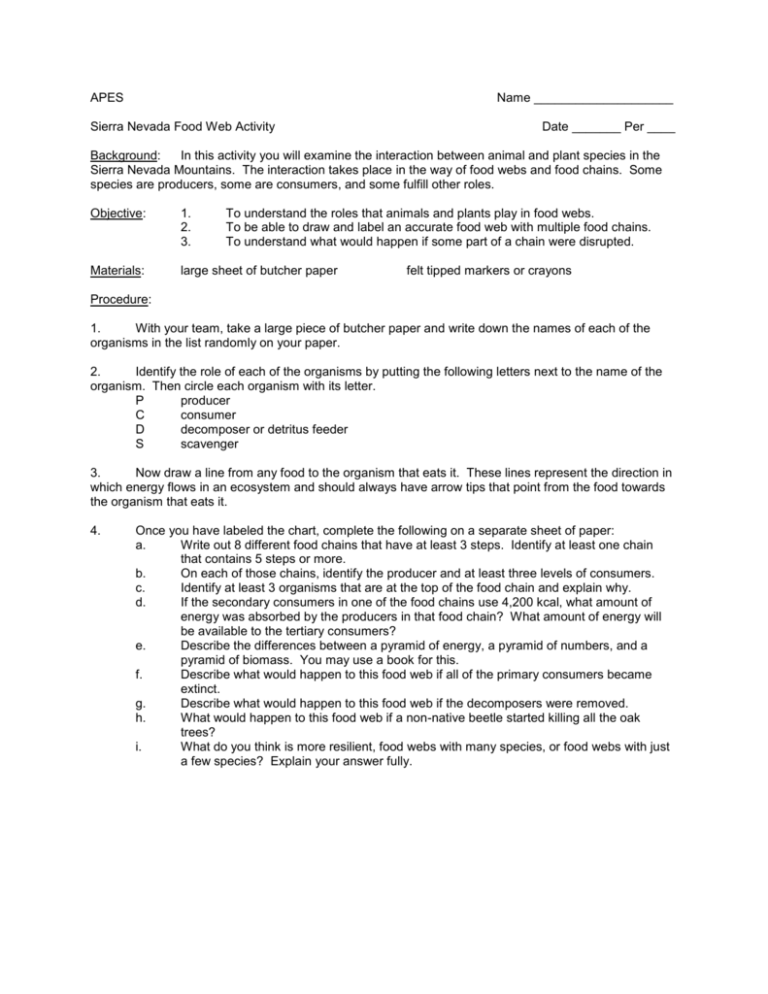
APES Name ____________________ Sierra Nevada Food Web Activity Date _______ Per ____ Background: In this activity you will examine the interaction between animal and plant species in the Sierra Nevada Mountains. The interaction takes place in the way of food webs and food chains. Some species are producers, some are consumers, and some fulfill other roles. Objective: 1. 2. 3. To understand the roles that animals and plants play in food webs. To be able to draw and label an accurate food web with multiple food chains. To understand what would happen if some part of a chain were disrupted. Materials: large sheet of butcher paper felt tipped markers or crayons Procedure: 1. With your team, take a large piece of butcher paper and write down the names of each of the organisms in the list randomly on your paper. 2. Identify the role of each of the organisms by putting the following letters next to the name of the organism. Then circle each organism with its letter. P producer C consumer D decomposer or detritus feeder S scavenger 3. Now draw a line from any food to the organism that eats it. These lines represent the direction in which energy flows in an ecosystem and should always have arrow tips that point from the food towards the organism that eats it. 4. Once you have labeled the chart, complete the following on a separate sheet of paper: a. Write out 8 different food chains that have at least 3 steps. Identify at least one chain that contains 5 steps or more. b. On each of those chains, identify the producer and at least three levels of consumers. c. Identify at least 3 organisms that are at the top of the food chain and explain why. d. If the secondary consumers in one of the food chains use 4,200 kcal, what amount of energy was absorbed by the producers in that food chain? What amount of energy will be available to the tertiary consumers? e. Describe the differences between a pyramid of energy, a pyramid of numbers, and a pyramid of biomass. You may use a book for this. f. Describe what would happen to this food web if all of the primary consumers became extinct. g. Describe what would happen to this food web if the decomposers were removed. h. What would happen to this food web if a non-native beetle started killing all the oak trees? i. What do you think is more resilient, food webs with many species, or food webs with just a few species? Explain your answer fully. Organisms Found in the Sierra Nevada Ecosystem Species (what they eat in parentheses) Note: If nothing in parentheses, then it is a producer. California Bat (flying insects) Mountain Lion (deer, rabbits, large rodents, bighorn sheep) Black Bear (berries, insect larvae, small mammals, nuts, tubers) Bobcat (small mammals, birds) Valley Oak Live Oak Lodgepole Pine Jeffery Pine Sugar Pine Bigleaf Maple Oak Moth Larva (oak tree leaves) Mosquitoes (protests, mammal blood) Coyote (scavenger, rodents, rabbits, vegetable matter) Lodgepole Chipmunk (acorns, seeds) California Ground Squirrel (acorns, seeds, mushrooms, birds, insects) Yellow-bellied Marmot (grasses) Mule Deer (grasses, herbaceous plants) Stellar Jay Bird (insects, worms, larvae) Great Horned Owl (rodents, lizards, snakes) Alpine grasses Herbaceous plants Elderberry bushes Mushrooms (decomposers) Bacteria (decomposer) Beetles (plants, fungus) California King Snake (rodents) Spiders (insects) California poppy Bracket fungus (decomposer) Thimbleberry bush Raccoon (fruits, nuts, insects, frogs) Golden Trout (mosquitoes, insect larvae) Bighorn sheep (grasses, herbaceous plants) Mayfly larvae (aquatic plants) Acorn woodpecker (acorns, insects) Worms (dead plants and animals) Protists
